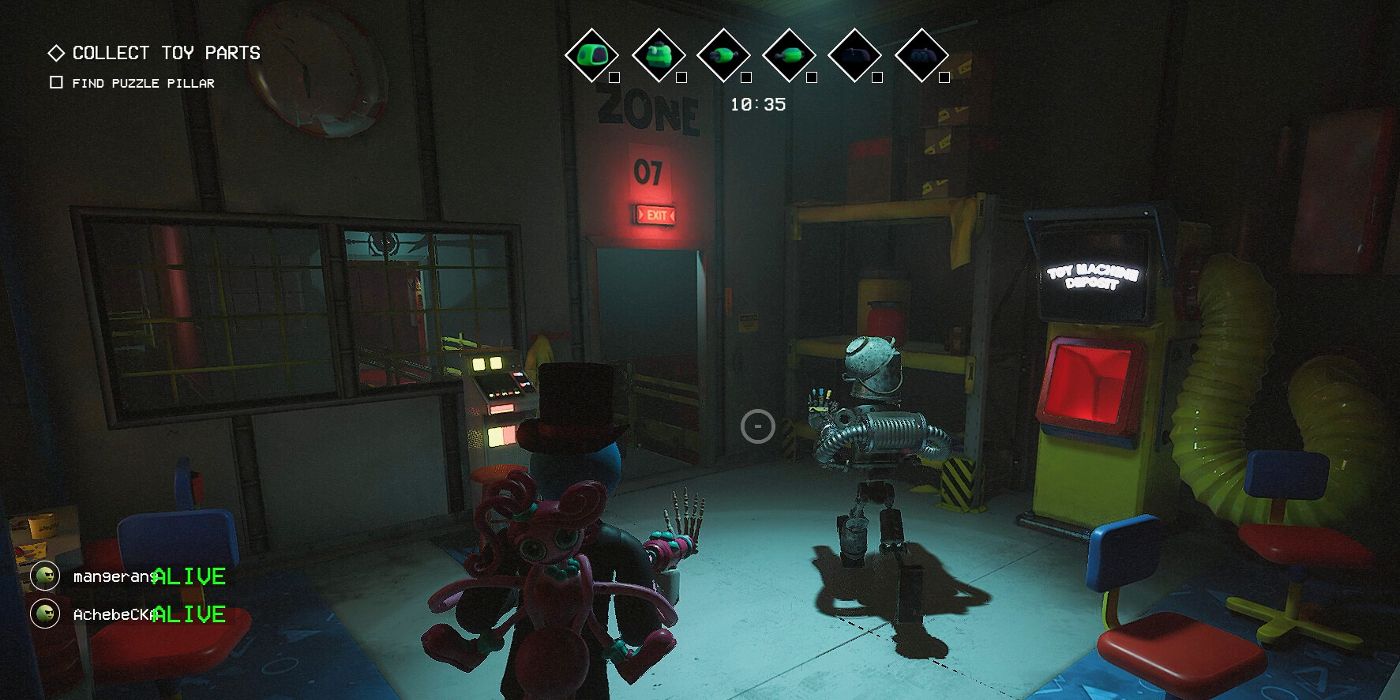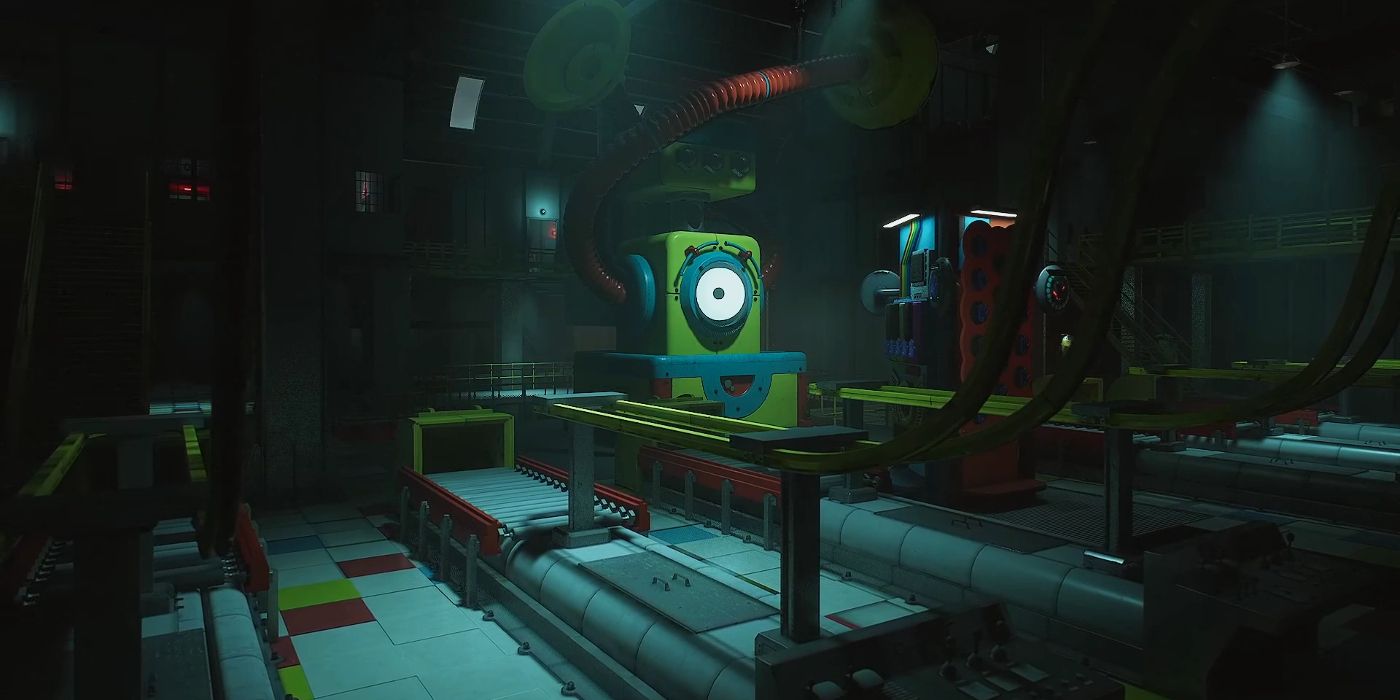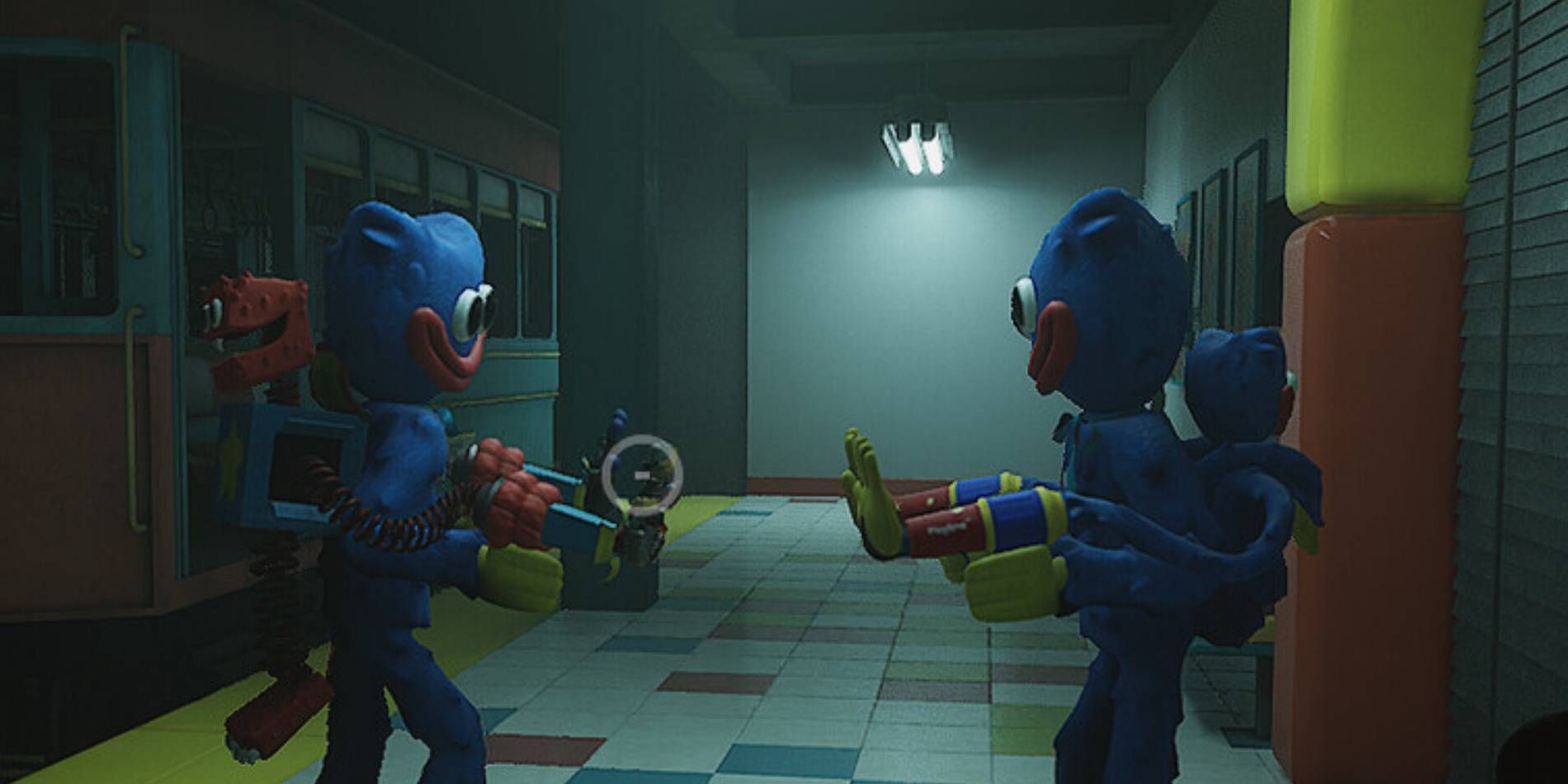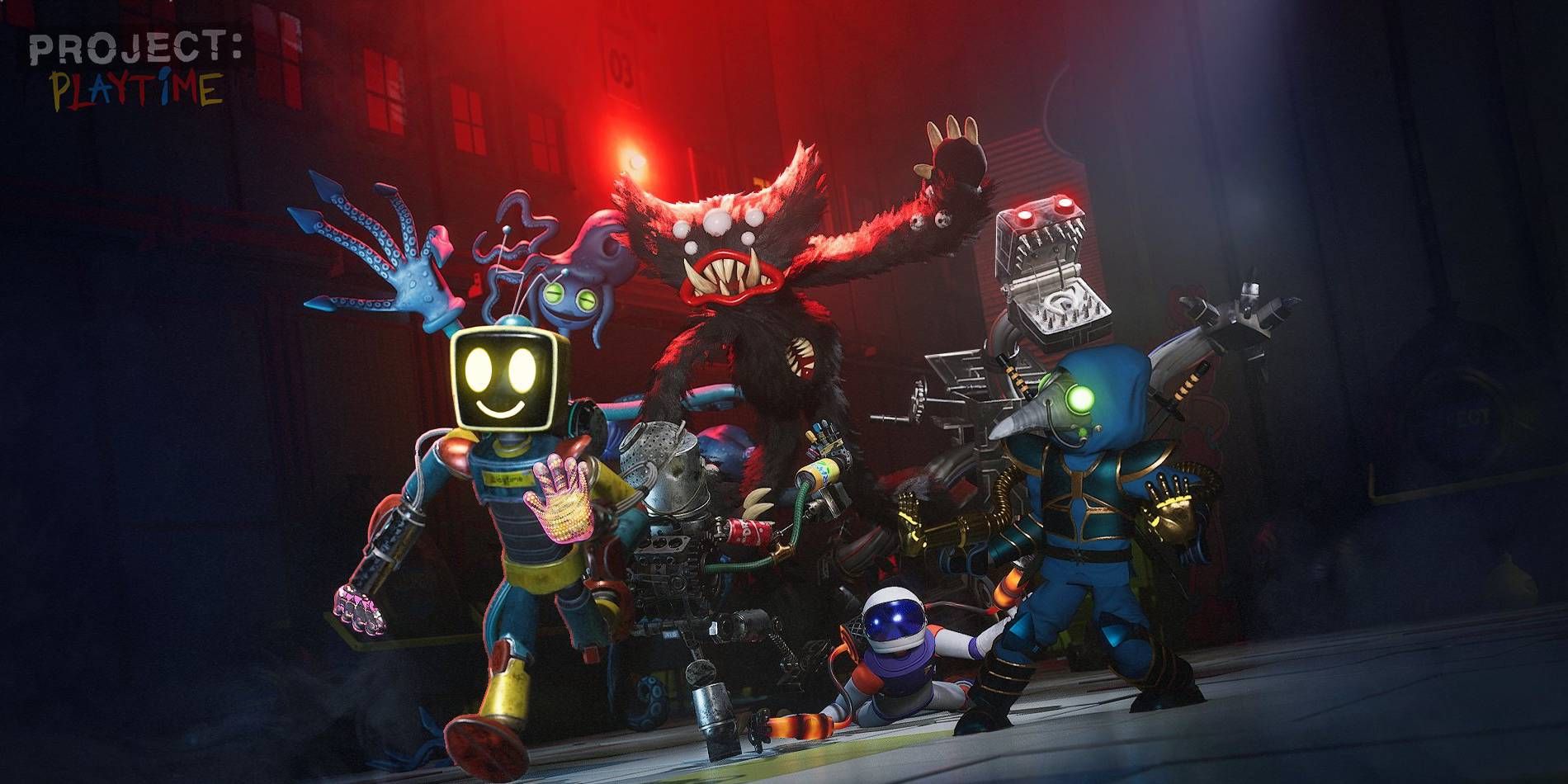With Poppy Playtime releasing a new multiplayer counterpart, Project: Playtime, this toy-inspired fictional universe has become more accessible than ever before. Between its unique atmosphere, its popularity online and among content creators, and the sheer fact that the game is free-to-play, younger audiences in particular have been drawn to this survival horror game since its release in early December 2022. But between strange characters and lore, it can be difficult to determine if Project: Playtime is appropriate for children.
The single-player version of the game amassed a large following soon after the release of Chapter 1 in 2021, with the face of the franchise, Huggy Wuggy, quickly becoming an iconic mascot and favorite character among children. Since then, the wide-grinned antagonist has caused nothing short of confusion and controversy. Parents, schools, and even police have issued warnings over Poppy Playtime in the past, mostly over Huggy Wuggy himself, and the bizarre obsession that some have developed with him. With this character, among others, being in Project: Playtime, it’s important to know the facts when approaching the subject with children.
Project: Playtime Is A Multiplayer Horror Experience

Just like its predecessor, Project: Playtime is, above all, a horror game. Playing with (and against) other players, children can be assigned one of two roles: Survivor or Monster. As a Survivor, players’ main goal is building a giant toy and escape the map. They must solve a variety of puzzles, which reward them with toy parts, and then work together with five other teammates to assemble the toy and leave on a train. As they are doing so, one player, who plays the role of the Monster, will chase and try to attack the Survivors.
There are three different antagonists to choose from in Project: Playtime, and each Monster has unique abilities that help them accomplish their mission. Huggy Wuggy, Mommy Long Legs, and the new Boxy Boo each have the power to kill Survivors. Meanwhile, Survivor players don’t have any means of defending themselves and must either run or hide to avoid being caught. If they get hit enough times, the Monster will pop up on screen as a jump scare, and the player will be downed. Incapacitated Survivors will usually be dragged to an “extraction pit,” where they can get revived by another player – but they’ll be swarmed by Mini Huggys in the meantime.
Creepy Atmosphere Replaces Graphic Violence In Project: Playtime

In contrast to many other horror games, Project: Playtime isn’t too graphic. There’s no blood, gore, or anything that depicts straightforward violence. The most graphic parts about the game are the jump-scares, which provide unexpected, disturbing close-ups of the Monsters’ faces – but nothing past that is shown. The game Five Nights At Freddy’s, or FNAF, which is conceptually similar to Poppy Playtime, heavily relied on jump-scares to make players feel on edge. Those who have played FNAF in the past may be desensitized to these moments, and may not find Project: Playtime scary. Even those who haven’t played FNAF can evade jump-scares if they’re skilled enough at avoiding the Monster.
That being said, Project: Playtime is not a casual, lighthearted game. Most of the tension comes from the intense music and creepy atmosphere that it creates. The maps are similar to those from Poppy Playtime, and they emulate child-oriented spaces from the 90s, their designs being reminiscent of something like an old McDonald’s PlayPlace or a Chuck-E-Cheese, only with these places being dimly-lit, abandoned, and overrun by giant toy Monsters. Although Project: Playtime is less scary than Poppy Playtime, it will still be confusingly frightening to most children.
Project: Playtime Reinforces Obsessions With Huggy Wuggy

To parents’ dismay, Project: Playtime may create even deeper obsessions with Monster characters, as well. Being the face of the Poppy Playtime franchise, Huggy Wuggy is unsurprisingly the first antagonist that children will encounter during the game. During the Survivor tutorial, he will have a jump-scare of his own, when the narrator tells the player it’s safe to come out, but Huggy is actually waiting around the corner. However, he is the main focus of the Monster tutorial, as well. A distorted voice will instruct the player (as Huggy) to kill the Survivors while spouting some disturbing dialogue, such as “Put them into the ground,” or “Tear them apart.“
This not only sends an unsettling message, but it encourages even further infatuation with Huggy Wuggy among kids. Some children may interpret these dark, violent themes as cool or interesting, as it provides some insight into the character’s backstory. Potentially, it could spawn more playground games or urban legends based around the infamous character, which were the basis of the warnings for Poppy Playtime in the first place. Although in actuality Huggy Wuggy isn’t as violent as other horror game characters, his psychological impact on children is undeniable, and this may be a cause for concern when it comes to Project: Playtime.
Project: Playtime’s Battle Pass Includes Microtransactions

Not only are the game’s contents scary, but microtransactions can be equally terrifying (if not more so) for parents. It’s currently free-to-play in early access (meaning it’s still under development), but alongside the harmless Toy Tickets in-game currency in Project: Playtime, MOB Games has already implemented a battle pass system into its game. Although nothing on it will necessarily help them win, it does feature some cosmetics that children will be eager to get their hands on. From colorful accessories to full-blown skins (many of which revolve around beloved monsters), kids always want to look their best in-game, and this system preys on that particular aspect.
The battle pass, otherwise called the Toy Box in Project: Playtime, can only be unlocked with Playcoins, a purchase that will require real-life money, as they cannot be earned by playing the game. There are some free items that players can earn without buying the premium battle pass, but they aren’t nearly as exciting, especially with the premium tracks including skins for Huggy Wuggy, Mommy Long Legs, and the new Boxy Boo character in Project: Playtime. With contents clearly marketed towards younger audiences, this makes it especially important for parents to be careful with credit card information, as children can purchase up to $50 (US) worth of Playcoins at a time.
In some ways, Project: Playtime is better than other games that are popular with children. There’s no voice chat, and the text chat automatically has a profanity filter which can’t be disabled – plus, there’s no graphic blood or violence. However, when considering the bigger picture, parents should think carefully before allowing their children to play the game. It can cause frightening connections to the notorious Huggy Wuggy and other monsters, which can easily lead to nightmares (both for the child, and the parents, who will likely be begged to buy Playcoins). Ultimately, the choice is up to the parents, but overall, Project: Playtime isn’t suitable for especially young children.




